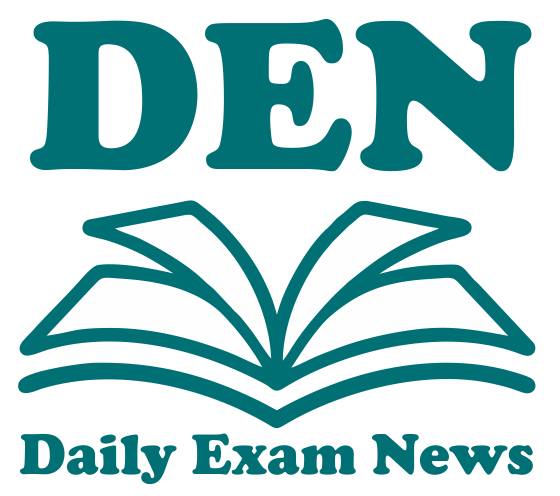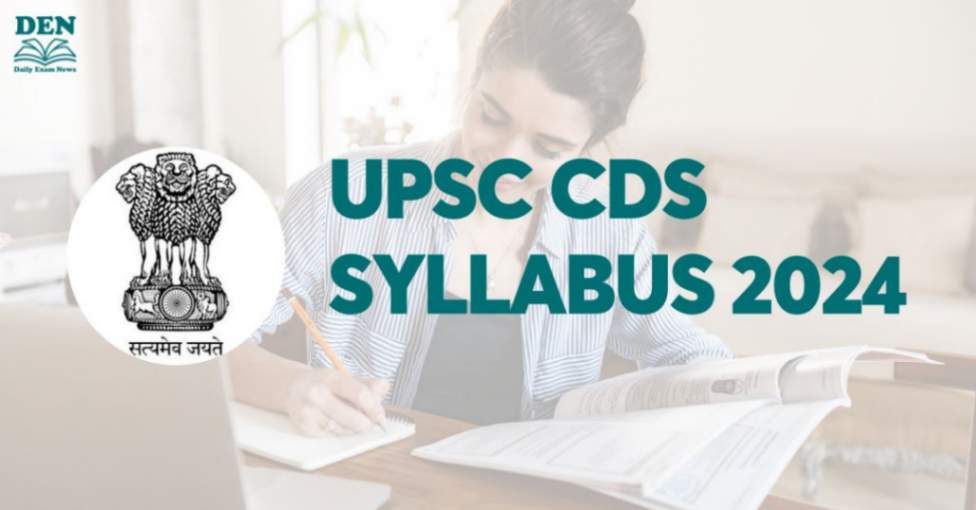The UPSC CDS Syllabus 2024 has been revealed through an official notification on the official website of UPSC. The exam will take place in a written format with objective type questions. There will be negative marking in the exam of 1/3rd marks so you must attempt the exam carefully. The subjects from which the aspirants can expect questions include General Knowledge, English and Maths etc.This implies that there will be The candidates who will qualify the exam will be eligible for further selection stages which includes a personality test. Moreover, the exam pattern will differ for the IMA, INA, AFA and OTA respectively. To learn more about the same, continue reading the article.
| UPSC CDS Syllabus Overview 2024 | |
| Exam Date | To Be Announced |
| Official Website | Click Here |
Overview of UPSC CDS Syllabus for 2024
Three subjects constitute the CDS syllabus: elementary mathematics (not required for OTA), general knowledge, and English. The CDS exam is held twice a year by UPSC, giving students more chances to take it. Mastering the syllabus, which serves as the basis for the test questions, is essential to passing the UPSC CDS 2024 exam. For the benefit of the candidate, a PDF version of the CDS syllabus and a full syllabus are included below.
CDS General Knowledge Syllabus
| Topic | Sub-topics |
| Current Affairs | Events of national and international importance |
| Sports | |
| Awards and honours | |
| Books and authors | |
| Major developments in the fields of politics, economics, and social issues | |
| History | Ancient Indian history |
| Medieval Indian history | |
| Modern Indian history | |
| Indian national movement | |
| Growth of nationalism | |
| Geography | Physical geography |
| Social geography | |
| Economic aspects of geography | |
| Indian geography | |
| World geography | |
| Indian Polity and Governance | Constitution of India |
| Political system | |
| Panchayati Raj | |
| Public Policy | |
| Rights Issues | |
| Economic and Social Development | Sustainable Development |
| Poverty | |
| Inclusion | |
| Demographics | |
| Social Sector Initiatives | |
| Science and Technology | Developments in the field of science and technology |
| Space technology | |
| Biotechnology | |
| Computer technology | |
| Environmental Ecology and Biodiversity | Conservation |
| Environmental pollution and degradation | |
| Environmental impact assessment | |
| Climate change | |
| Defense and Security Issues | Current events related to national security |
| Internal and external threats | |
| Role of Armed Forces |
CDS English Syllabus
| Section | Sub Topics | Description |
| Vocabulary | Basic Grammar | This section tests the candidate’s knowledge of English vocabulary. |
| Idioms & Phrases | ||
| Synonyms & Antonyms | ||
| Sentence Completion | ||
| etc. | ||
| Reading Passage | Reading Comprehension Solving | This section tests the candidate’s ability to understand and interpret written English. |
| Para Jumbles | ||
| Understanding the main idea and supporting details | ||
| Answering questions based on the passage | ||
| etc. | ||
| Grammar | Error Spotting | This section tests the candidate’s knowledge of English grammar. |
| Sentence Improvement | ||
| Cloze test | ||
| Active and passive voice | ||
| Direct and indirect speech | ||
| Transformation of sentences |
CDS Maths Syllabus
| Section | Sub-Topics |
| Arithmetic | Number System: Natural numbers, Rational & Real numbers, Integers |
| Fundamental operation: Subtraction, multiplication, addition, division, Square roots, Decimal fractions | |
| Time and work | |
| Percentage | |
| Time and distance | |
| Simple & Compound interest | |
| Ratio and proportion | |
| Profit and loss | |
| Elementary Number Theory: Division algorithm | |
| Prime and composite numbers: Tests of divisibility by 2, 3, 4, 5, 9 and 11. | |
| Multiples and factors | |
| Factorisation Theorem | |
| L.C.M. and H.C.F. | |
| Euclidean algorithm | |
| Logarithms to base 10, use of logarithmic tables | |
| Laws of logarithms | |
| Algebra | Basic Operations |
| Simple factors | |
| H.C.F. and L.C.M. | |
| Remainder Theorem | |
| Theory of polynomials | |
| Solutions of quadratic equations, the relation between its roots & coefficients (Only real roots to be considered) | |
| Linear inequalities in two variables and their solutions | |
| Linear equations in two unknowns—analytical & graphical solutions | |
| Practical problems leading to two simultaneous linear equations or inequalities in two variables or quadratic equations in one variable & their solutions | |
| Rational expressions and conditional identities | |
| Set language & set notation | |
| Laws of indices | |
| Trigonometry | Sine ×, cosine ×, Tangent × when 0° < × < 90° Values of sin ×, cos × and tan ×, for × = 0°, 30°, 45°, 60° and 90° |
| Simple trigonometric identities | |
| Use of trigonometric tables | |
| Simple cases of heights and distances | |
| Geometry | Plane & plane figures, Lines & angles |
| Theorems on | |
| Properties of angles at a point | |
| Parallel lines | |
| Sides & angles of a triangle | |
| Congruency of triangles | |
| Similar triangles | |
| Concurrence of medians and altitudes | |
| Properties of angles, sides and diagonals of a parallelogram, square and rectangle | |
| Circles and their properties including tangents and normals | |
Mensuration | Areas of figures which can be split up into these figures (Field Book) |
| Parallelograms | |
| Areas of squares | |
| Rectangles, triangles and circles | |
| Surface area and volume of cuboids | |
| Surface area and volume of spheres | |
| Lateral surface and volume of right circular cones and cylinders | |
| Statistics | Collection and tabulation of statistical data |
| Graphical representation frequency: Polygons, Histograms, Bar charts, Pie charts | |
| Measures of central tendency |
CDS Syllabus for Intelligence and Personality Test
| CDS Syllabus for SSB Selection | |
| Stage | Test |
| Stage 1 | Officer Intelligence Rating (OIR)Picture Prescription and Descriptive Test |
| Stage 2 | InterviewGroup Testing Officer (GTO) TasksPsychology TestConference |
| Stage 3 | Group Discussion |
CDS Exam Pattern 2024
The written test and interview process constitute the CDS test format. The written exam consists of three different-length and point-scoring examinations on elementary mathematics, general knowledge, and English. The candidates’ personalities, leadership potential, and fitness for commissioning into the Indian Armed Forces are evaluated throughout the interview process.
Exam Pattern for IMA, INA, AFA
The exam will be of a total duration of 2 hours. And the exam will consist of subjects such as English, General Knowledge, Mathematics. Each subject will comprise of 100 marks.
| Subject | Duration | Maximum Marks |
| English | 2 Hours | 100 |
| General Knowledge | 2 Hours | 100 |
| Mathematics | 2 Hours | 100 |
| SSB/Interview | 5 Days | 300 |
Exam Pattern for OTA
The exam will take place for a total of 2 hours. Various subjects will have different marking schemes. The aspirants can gauge at the exam pattern for OTA from the table below.
| Subject | Duration | Maximum Marks |
| English | 2 Hours | 100 |
| General Knowledge | 2 Hours | 100 |
| SSB/Interview | 5 Days | 300 |
Check here for more information on other examinations-
Hopefully, this information was useful for all the aspiring candidates preparing for the Indian Navy SSR Recruitment. Check DailyExamNews to stay informed about the latest recruitments, tests, vacancies, and developments regarding government exams.

